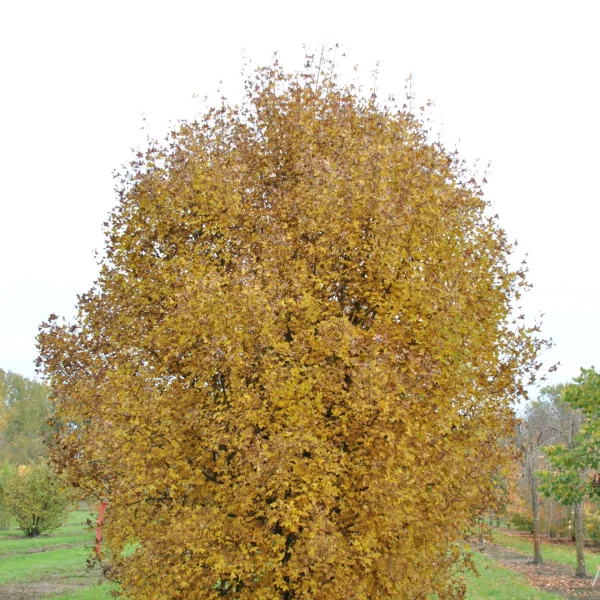Acer campestre 'Elsrijk' – Acer campestre 'Elsrijk'
Aceraceae
Acer campestre 'Elsrijk' – Acer campestre 'Elsrijk'
Acer campestre "Elsrijk" este foarte asemănător din punct de vedere morfologic cu specia. De regulă, copacul rămâne puțin mai jos, iar frunzele sunt ceva mai mici. Caracteristica sa cea mai izbitoare este coroana foarte densă și închisă pe care o formează. Acest lucru face ca "Elsrijk" să fie eminamente potrivit pentru utilizarea pe străzile înguste. Faptul că planta tolerează bine pavajul contribuie în mod pozitiv la acest lucru. Planta formează o rădăcină principală puternic ramificată, cu foarte multe rădăcini păroase. Elsrijk" este puțin sensibil la mucegai, o altă caracteristică care a contribuit la includerea sa în sortimentul standard de arbori de bulevard într-un timp relativ scurt. În 1953, "Elsrijk" a fost selectat dintr-o populație de arbori de 12 ani. Chiar și atunci, planta se remarca prin forma îngustă a coroanei sale.
Availability
Specifications
Download PDF
Height
circa 12 m
Width
7-8m
Crown
closely oval to widely conical shaped, dark, dense crown
Bark and branches
grey bark
Leaf
3/5 lobes, dark green, 4 - 6 cm
Autumn colour
yellow
Flowers
small, terminal corymbs, yellow green, May
Fruits
single-seed, winged nutlets, always paired
Spines/thorns
None
Toxicity
usually not toxic to people, (large) pets and livestock
Soil type
all, except dry infertile sandy soil
Paving
tolerates paving
Winter hardiness zone
5a (-28,8 to -26,1 °C)
Wind resistance
very good
Other resistances
resistant to frost (WH 1 - 6), can withstand wind, resistant to de-icing salt
Fauna tree
aluable for bees (honey plant), valuable for butterflies
Application
avenues and broad streets, narrow streets, tree containers, roof gardens, coastal areas, industrial areas
Shape
clearstem tree, feathered tree, multi-stem treem
Origin
C.P. Broerse, municipal nursery Amstelveen (NL), 1953
Possibly of interest
Frequently asked questions
Acer campestre 'Elsrijk'
Acer campestre 'Elsrijk' can eventually reach a height of circa 12 m, depending on the site and climate conditions.
Acer campestre 'Elsrijk' has a average growing and can eventually reach a height of circa 12 m, depending on the site and climate conditions.
The leaves of Acer campestre 'Elsrijk' turn yellow in autumn.
The right time to plant Acer campestre 'Elsrijk' is during the dormancy period. In Western Europe, Acer campestre 'Elsrijk' with root balls can generally be planted from mid-November to late April, although this depends strongly on the climatic conditions and the species of tree.
may.
General
 English
English
 English (United Kingdom)
English (United Kingdom)
 Nederlands
Nederlands
 Nederlands (België)
Nederlands (België)
 Deutsch
Deutsch
 français
français
 čeština
čeština
 polski
polski
 español
español
 română
română
 dansk
dansk
 svenska
svenska
 magyar
magyar
 Türkçe
Türkçe
 slovenčina
slovenčina
 русский
русский
 norsk
norsk







